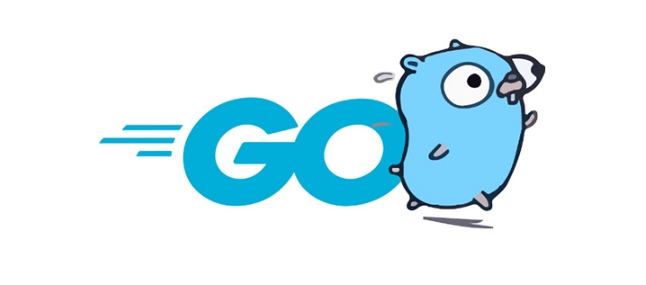The key to installing Go is to select the correct version, configure environment variables, and verify the installation. 1. Go to the official website to download the installation package of the corresponding system. Windows uses .msi files, macOS uses .pkg files, Linux uses .tar.gz files and unzip them to /usr/local directory; 2. Configure environment variables, edit ~/.bashrc or ~/.zshrc in Linux/macOS to add PATH and GOPATH, and Windows set PATH to Go in the system properties; 3. Use the go version command to verify the installation, and run the test program hello.go to confirm that the compilation and execution are normal. In the entire process, PATH settings and environment variable configuration are the most prone to errors, so special attention is required.

It is actually not difficult to install Go. As long as you follow the steps, you can basically do it smoothly. The key is to select the right version, correctly configure the environment variables, and verify that the installation is successful.

Download the Go installation package for the corresponding system
First, go to the official website download page ( http://www.miracleart.cn/link/e6fb52c108655e3dbb47bfeccce12131 to use the .msi file, macOS to use .pkg , and Linux to use .tar.gz .
- Windows users double-click the installation package and then take the next step.
- After clicking on installing the package, you will promptly drag to the Applications folder.
- For Linux, you need to manually decompress to
/usr/localdirectory. The command is roughly like this:
sudo tar -C /usr/local -xzf go1.xx.x.linux-amd64.tar.gz
Remember to replace the file name with the version name you actually downloaded.

Configure environment variables
This step is a place where many people are prone to errors, especially the bin path with PATH without GO.
- On Linux/macOS, edit the
~/.bashrcor~/.zshrcfile, plus these two lines:
export PATH=$PATH:/usr/local/go/bin export GOPATH=$HOME/go
Then execute source ~/.bashrc or source ~/.zshrc to take effect.

- Windows users can add paths in "System Properties → Advanced System Settings → Environment Variables". Add a path like
C:\Program Files\Go\binto PATH, depending on your installation location.
GOPATH can be customized, but the default is $HOME/go or %USERPROFILE%\go . It is recommended to keep the default, so it is not easy to get confused.
Verify that the installation is successful
Open a terminal or command line tool and enter:
go version
If the output is similar to go version go1.20.5 darwin/amd64 , it means that Go has been installed.
You can also run a simple test program to see if it can be compiled and executed:
package main
import "fmt"
func main() {
fmt.Println("Hello, Go!")
} Save as hello.go and run:
go run hello.go
If you print "Hello, Go!", then there's no problem.
Basically all this is it, the whole process is not complicated, but the PATH setting and environment variables are most likely to cause problems. As long as you pay attention to these details, you can usually do it.
The above is the detailed content of How to install Go. For more information, please follow other related articles on the PHP Chinese website!

Hot AI Tools

Undress AI Tool
Undress images for free

Undresser.AI Undress
AI-powered app for creating realistic nude photos

AI Clothes Remover
Online AI tool for removing clothes from photos.

Clothoff.io
AI clothes remover

Video Face Swap
Swap faces in any video effortlessly with our completely free AI face swap tool!

Hot Article

Hot Tools

Notepad++7.3.1
Easy-to-use and free code editor

SublimeText3 Chinese version
Chinese version, very easy to use

Zend Studio 13.0.1
Powerful PHP integrated development environment

Dreamweaver CS6
Visual web development tools

SublimeText3 Mac version
God-level code editing software (SublimeText3)

Hot Topics
 How do I call a method on a struct instance in Go?
Jun 24, 2025 pm 03:17 PM
How do I call a method on a struct instance in Go?
Jun 24, 2025 pm 03:17 PM
In Go language, calling a structure method requires first defining the structure and the method that binds the receiver, and accessing it using a point number. After defining the structure Rectangle, the method can be declared through the value receiver or the pointer receiver; 1. Use the value receiver such as func(rRectangle)Area()int and directly call it through rect.Area(); 2. If you need to modify the structure, use the pointer receiver such as func(r*Rectangle)SetWidth(...), and Go will automatically handle the conversion of pointers and values; 3. When embedding the structure, the method of embedded structure will be improved, and it can be called directly through the outer structure; 4. Go does not need to force use getter/setter,
 How do I use the time package to work with time and durations in Go?
Jun 23, 2025 pm 11:21 PM
How do I use the time package to work with time and durations in Go?
Jun 23, 2025 pm 11:21 PM
Go's time package provides functions for processing time and duration, including obtaining the current time, formatting date, calculating time difference, processing time zone, scheduling and sleeping operations. To get the current time, use time.Now() to get the Time structure, and you can extract specific time information through Year(), Month(), Day() and other methods; use Format("2006-01-0215:04:05") to format the time string; when calculating the time difference, use Sub() or Since() to obtain the Duration object, and then convert it into the corresponding unit through Seconds(), Minutes(), and Hours();
 How do I use if statements to execute code based on conditions in Go?
Jun 23, 2025 pm 07:02 PM
How do I use if statements to execute code based on conditions in Go?
Jun 23, 2025 pm 07:02 PM
InGo,ifstatementsexecutecodebasedonconditions.1.Basicstructurerunsablockifaconditionistrue,e.g.,ifx>10{...}.2.Elseclausehandlesfalseconditions,e.g.,else{...}.3.Elseifchainsmultipleconditions,e.g.,elseifx==10{...}.4.Variableinitializationinsideif,l
 How do I download and install VS Code on my operating system?
Jun 24, 2025 am 12:04 AM
How do I download and install VS Code on my operating system?
Jun 24, 2025 am 12:04 AM
TodownloadandinstallVisualStudioCode,firstchecksystemrequirements—Windows10 (64-bit),macOS10.13 ,ormodernLinuxdistributions—thenvisittheofficialwebsitetodownloadthecorrectversionforyourOS,andfollowinstallationstepsspecifictoyourplatform.Beginbyensuri
 How do I use bitwise operators in Go (&, |, ^, &, )?
Jun 23, 2025 pm 01:57 PM
How do I use bitwise operators in Go (&, |, ^, &, )?
Jun 23, 2025 pm 01:57 PM
Use bit operators to operate specific bits of integers in Go language, suitable for processing flag bits, underlying data, or optimization operations. 1. Use & (bit-wise) to check whether a specific bit is set; 2. Use
 How do I use the Lock() and Unlock() methods to protect a critical section of code in Go?
Jun 23, 2025 pm 08:37 PM
How do I use the Lock() and Unlock() methods to protect a critical section of code in Go?
Jun 23, 2025 pm 08:37 PM
The standard way to protect critical areas in Go is to use the Lock() and Unlock() methods of sync.Mutex. 1. Declare a mutex and use it with the data to be protected; 2. Call Lock() before entering the critical area to ensure that only one goroutine can access the shared resources; 3. Use deferUnlock() to ensure that the lock is always released to avoid deadlocks; 4. Try to shorten operations in the critical area to improve performance; 5. For scenarios where more reads and less writes, sync.RWMutex should be used, read operations through RLock()/RUnlock(), and write operations through Lock()/Unlock() to improve concurrency efficiency.
 How do I install Composer on my operating system (Windows, macOS, Linux)?
Jul 01, 2025 am 12:15 AM
How do I install Composer on my operating system (Windows, macOS, Linux)?
Jul 01, 2025 am 12:15 AM
Installing Composer takes only a few steps and is suitable for Windows, macOS, and Linux. Windows users should download Composer-Setup.exe and run it to ensure that PHP is installed or XAMPP is used; macOS users need to execute download, verification, and global installation commands through the terminal; Linux users operate similarly to macOS, and then use the corresponding package manager to install PHP and download and move the Composer file to the global directory.
 How do I create a ticker that executes a function repeatedly at a specified interval in Go?
Jun 23, 2025 pm 05:21 PM
How do I create a ticker that executes a function repeatedly at a specified interval in Go?
Jun 23, 2025 pm 05:21 PM
Using time.NewTicker in Go can implement a time-execution function. First, create a ticker and listen to its channel, and execute the objective function when a signal is received; second, the ticker should be placed in the goroutine to avoid blocking the main thread; finally, the select and interrupt signals can be combined with elegant exit. The sample code triggers the doSomething function by listening to ticker.C for loop, and ensures resource release through deferticker.Stop(); to avoid blocking the main program, put the ticker into the startTicker function and run in the goroutine; in addition, you can also use select to listen for interrupt signals to implement the program.






